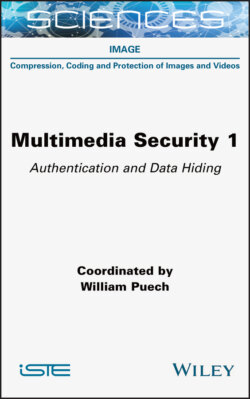Читать книгу Multimedia Security, Volume 1 - William Puech - Страница 26
1.3.2.1. Raw image acquisition
ОглавлениеThe value at each pixel generated by the process described in section 1.2.1 can be modeled as a Poisson variable, whose expectation is the real value of the pixel. The noise measured at the CCD or CMOS sensor has several components; Table 1.1 describes the main sources.
Figure 1.2 shows the noise curve obtained by temporal series (ground truth) and the estimation obtained from a single image computed using Ponomarenko et al.’s method (Colom and Buades 2013) with a simplified pipeline. Note that the estimate is accurate since all curves match. At this step, all channels have the same noise curve. As noise follows a Poisson distribution, the noise variance follows a simple linear relation σ2 = a + bu, where u is the intensity of the ideal noiseless image, and a and b are constants. Consequently, the noise curves are strictly increasing. Moreover, although the noise curves do not account for it, the noise characteristics reported above suggest that the noise is uncorrelated, that is, the noise at a certain pixel is not related to noise at any other pixel with the same signal intensity.
Table 1.1. Description of the main sources of noise during the acquisition process
| Type of noise | Description |
|---|---|
| Shot noise | Due to the physical nature of light. It describes the fluctuations in the number of photons detected due to their independent emission from each other. |
| Dark noise | Some electrons accumulate on the potential well as the result of a thermal cause. These electrons are known as dark current because they are present and will be detected even in the absence of light. |
| Photo response non-uniformity (PRNU) | It describes the way in which the individual pixels in the sensor array respond to uniform light sources. Due to variations in pixel geometry, substrate material, and micro-lenses, different pixels do not produce the same number of electrons from the same number of photons hitting them. |
| Readout noise | During the readout phase of the acquisition process, a voltage value is read at each pixel. This voltage is computed as a potential difference from a reference level which represents the absence of light. Thermal noise, inherent in the readout circuit, affects the output values. |
| Electronic noise | It is caused by the absorption of electromagnetic energy by the semiconductors of the camera circuits and the cross-talk phenomenon. |
